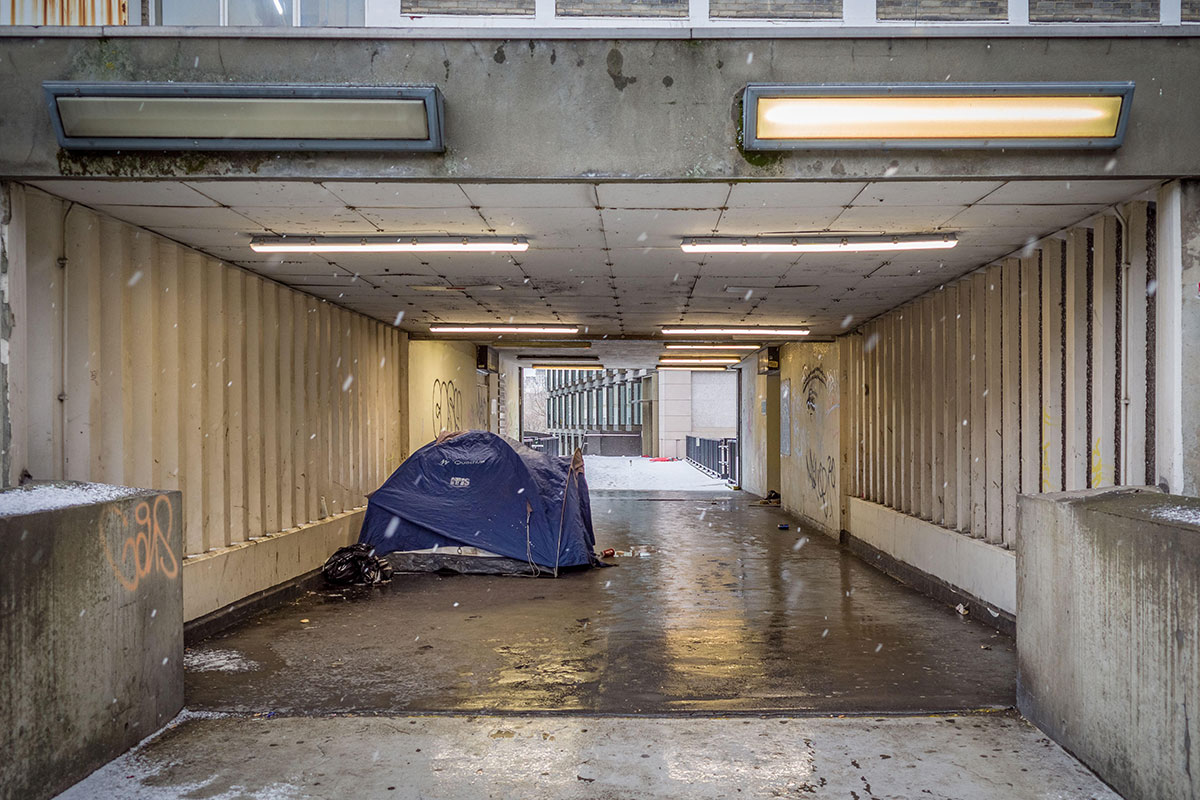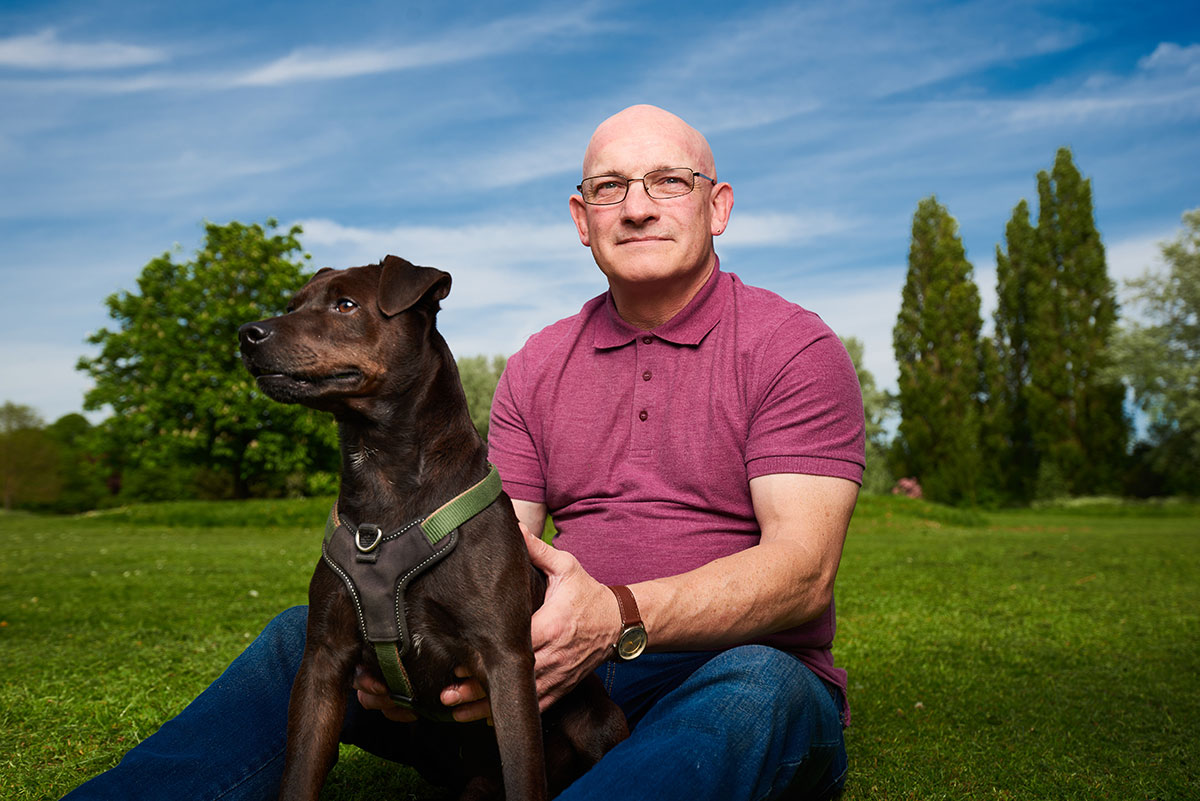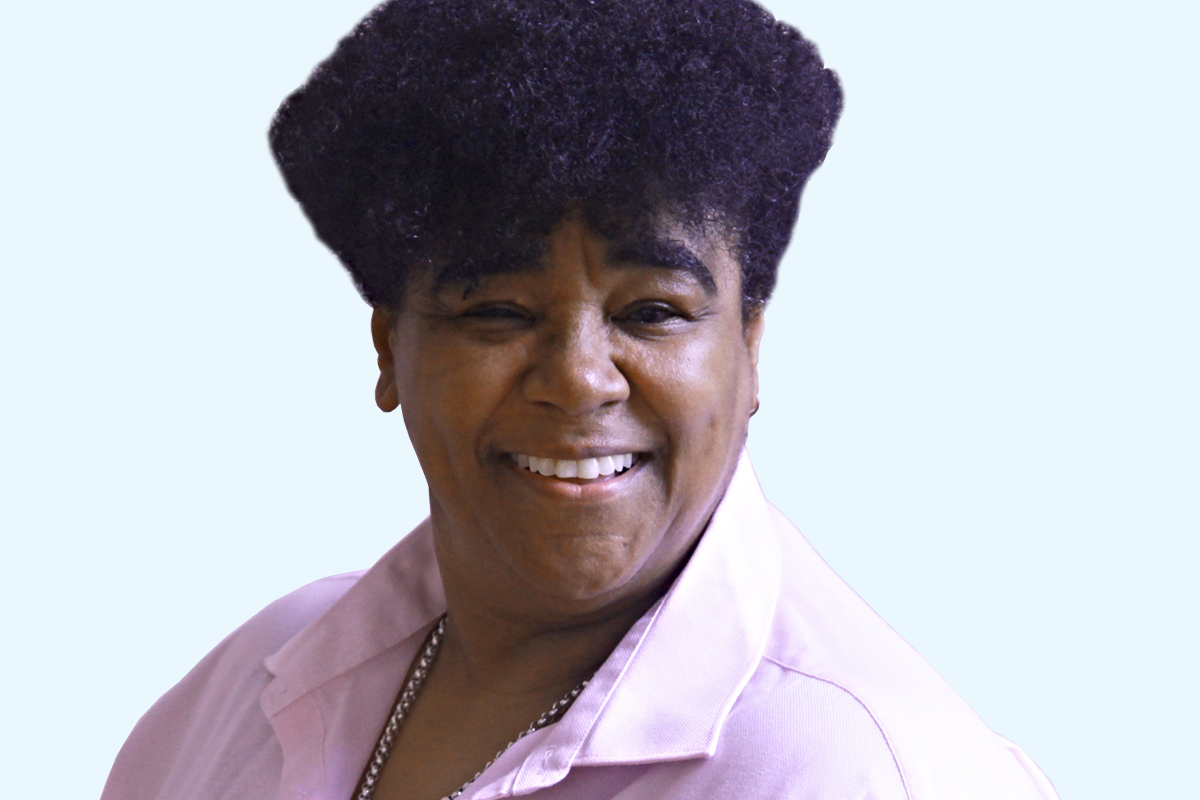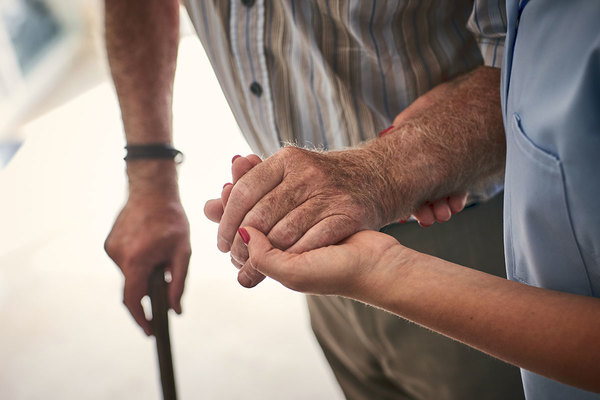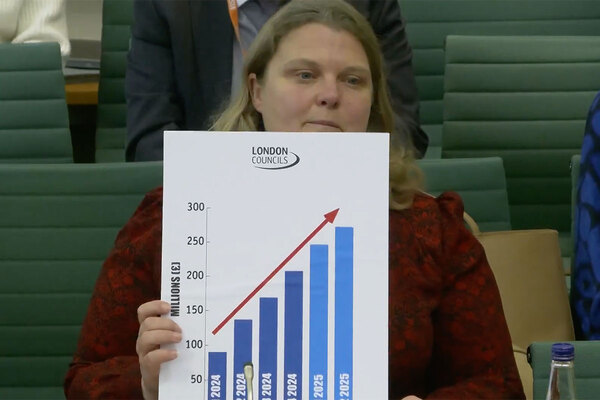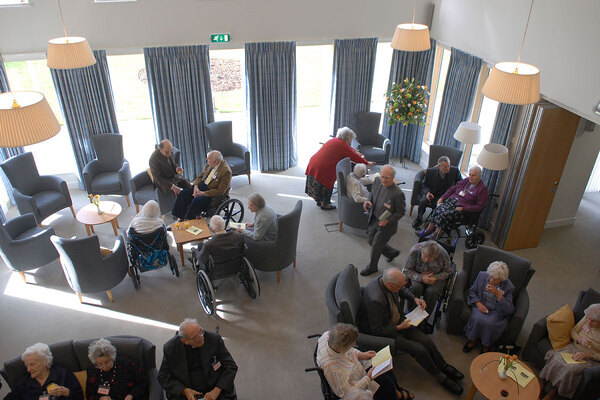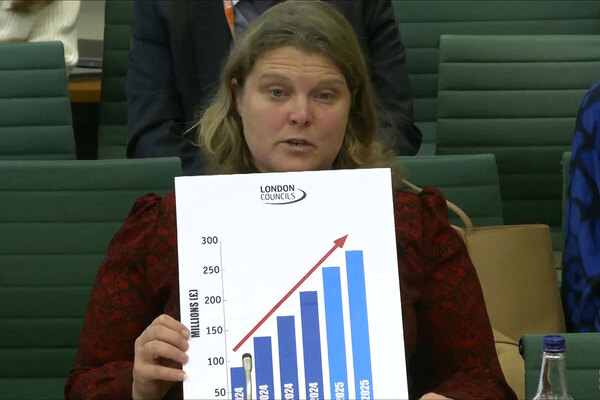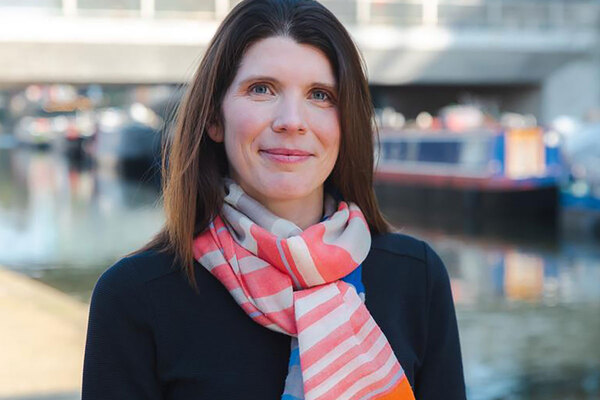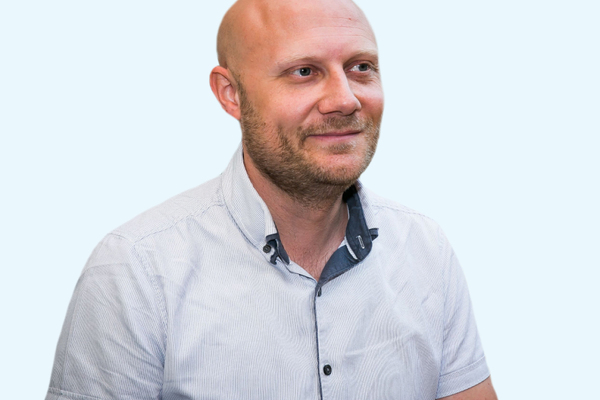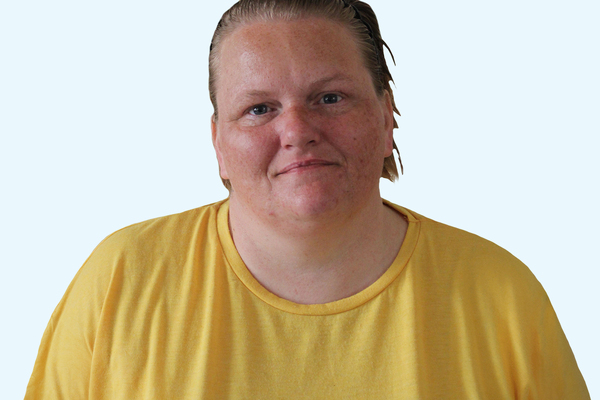Homeless and with communication difficulties: how services can listen better
What can the social housing and homelessness sector learn about how to interact with people who have complex communication needs? Katharine Swindells finds out. Illustration by Patrick George
In 2022, Leigh Andrews was asked by a street outreach team in London to meet with a man who was sleeping rough. He had been refusing repeated offers of accommodation for 18 months. Even during the pandemic, he had refused to move into an emergency hotel.
Ms Andrews, a trained speech and language therapist, decided to try a different approach, using pictures to assist as she found out more about the man’s communication needs and why he had refused accommodation.
“It turned out [he was] scared,” she says. “It’s not that [he] didn’t want accommodation, but [he was] scared about the process. So then I was able to support the staff working with that person to talk about the process of accommodation using different types of communication methods.”
Ms Andrews provided communication strategies to the street outreach team, and the next time the man was offered accommodation, he took it.
Engagement has become something of a buzzword in the sector, but do organisations need to be thinking more about their residents and service users with more complex communication needs? And how can communication principles improve organisations’ everyday interactions with their customers and clients?
Brain injury and trauma
Ms Andrews worked in homelessness services for 15 years – in hostels, day centres and supported housing – before she trained as a speech and language therapist. Now her organisation, Change Communication, works with councils and providers of hostels and homelessness services to bring the expertise of clinically trained speech and language therapists to their work. Her book on the topic, “You all f***ing talk too much”, named after a common sentiment among the people she works with, was published in October 2024.
“Throughout my training, I noticed that when we were being taught about people with communication needs, there was never any reference to the kind of clients I’d been working with for many years. People who were currently homeless on the streets or people who had experienced homelessness were just absent from the syllabus.”
“When I worked in homelessness, I’d never come across a speech and language therapist working with any of my clients. I knew from my own experience that there was a need, and it didn’t appear that anybody
else was fulfilling that need.”
There are a lot of factors that can cause communication difficulties for those currently or formerly experiencing homelessness. Ms Andrews’ research with Nicola Botting, published in 2020 in the International Journal of Language & Communication Disorders, studied UK nationals sleeping rough in London, and found that they were almost twice as likely as the general population to have a communication difficulty.
A huge factor, Ms Andrews says, is traumatic brain injury, which is “highly prevalent” among people who sleep rough and can cause issues with memory and communication. An international study in 2019 published in The Lancet found that more than half (53%) of homeless and marginally housed people had suffered traumatic brain injury, and a quarter had a moderate or severe brain injury.
This injury could be a consequence of homelessness, but could also be a contributory factor, as those experiencing the effects of a brain injury may find it harder to find and retain housing. An older UK study by the Brain Injury Rehabilitation Trust found that the traumatic brain injury rate among those who sleep rough was 48%, and that 90% of people studied had sustained their first brain injury before becoming homeless.
Research by Crisis found that 86% of rough sleepers had at least one mental health disorder need, and 63% had three or more needs, including psychosis, PTSD and anti-social/borderline personality disorder, all of which can make it harder for someone to understand or communicate information.
The NHS estimates that eight in 10 people who sleep rough have experienced childhood trauma, which can impact memory and communication development.
There is also some research which shows that people who sleep rough are more likely to show signs of being autistic, while other research indicates a higher prevalence of people with ADHD. A survey conducted at a day centre found that 13% of visitors had a learning disability, compared to an estimated 2% in the general population.
“Over the last 10 years or so, there’s been strides forward within the homelessness sector generally, about psychologically informed environments and being trauma-informed,” Ms Andrews says. “So I think there’s been an increase in awareness that if we have an understanding of the brain and what’s happened to the brain over the course of somebody’s lifetime, we might be able to provide more appropriate support.”
There are also physical factors that impact communication, such as high rates of lung conditions (including chest infections, asthma, pneumonia and chronic obstructive pulmonary disease) that can impede breathing and speaking, as well as unmanaged pain that may be making it difficult to communicate.
Rough sleeping sees higher prevalence of drug and alcohol use, which can impact communication in the moment, but also cause damage to the brain in the long term.
But Ms Andrews is quick to assert that this is not all her clients – she estimates that around half are current drug or alcohol users, but those who are tend to use drugs and alcohol to a very high and hazardous level. However, she adds, drug and alcohol use is subject to stigma in the sector, and she finds that often communication issues are written off as intoxication, when in fact there are more underlying problems.
“When we see them without the presence of drugs and alcohol in their system at that point, then we can compare. And what we sometimes find is that the communication is not that different between when they’re drinking and when they’re not,” she says.
And often, conversations between homelessness services and those they work with are happening in noisy, busy or overstimulating environments, meaning any of these factors that make communication challenging are exacerbated.
A personal view
James* is 65 years old and has lived in sheltered housing in London for 11 years. He has experienced homelessness in the past, but it was only a few years ago that one of his support workers identified his communication difficulties, which meant he struggled to engage with support services. A speech and language therapist worked with James to figure out the best ways for him to communicate, and helped him to articulate that to his housing association, and the other services he gets support from.
James struggles with written information, so his speech and language therapist uses pictures to aid his understanding of documents, which he says “make it more fun and help you understand”.
But his preference is always face-to-face contact. “I don’t like phones. If anyone says I’ll email or text, I say ‘don’t bother’,” he says. “I don’t understand it, and it’s so impersonal.”
James finds official meetings quite worrying, and finds that often services spring appointments on him at the very last minute, when “psychologically I have to build up to it”.
Ms Andrews says this is common. “Many of the people we work with are really worried about meeting professionals. That can be anxiety-inducing, because they’ve had a whole range of different experiences, and some of them have been quite negative.”
She recommends that professionals always clearly communicate the purpose of the meeting in advance, when it will be and how long it will take. She advises making sure the meeting is in a calm, quiet environment, keeping it as short as possible, and recapping it at the end.
James’ main advice is for housing associations and services to form personal connections with the people they support, learn their communication needs, and keep notes prepared for other professionals. This would help people to feel more able to advocate for themselves.
“They could learn to give clients more space and listen to what they’re saying,” he says.
*Name has been changed
“There can be all of these different aspects, which make communication less effective than it could be. And if support organisations aren’t communicating effectively and supporting the individual to express themselves to their fullest extent, are they able to do their job properly?”
Joe Batty has worked in homelessness services throughout his career, including a decade at St Mungo’s, and is now a trustee of Change Communication. He is also, he tells me in the spirit of full disclosure, Ms Andrews’ partner – although they have been together since before either worked in the sector.
Simple changes
In the 1990s, Mr Batty was involved in setting up the CHAIN system, which allows homelessness services to share information among each other about work carried out with rough sleepers. Now, he laments what could have been achieved if CHAIN had recorded information on people’s communication needs, beyond whether they spoke English.
“It’s a real shame the amount of rich data that has been missed,” he says. “This is a bit like a Rosetta Stone that we didn’t know we needed.”
Victoria Aseervatham, rough sleeping accommodation co-ordinator at Westminster City Council, has seen the demand for communication support first hand.
At the start of the COVID-19 lockdown, she commissioned Change Communication to provide speech and language therapy to rough sleepers being housed in hotels. In the first COVID-19 hotel, the staff found that 80% had communication needs. In one of Westminster’s hotels, 57% had a history of traumatic brain injury, and 48% had experienced multiple brain injuries.
Speech and language therapy expertise has helped a number of rough sleepers on an individual basis, but also brought in smaller changes across the whole hotels. Documents were simplified to reduce complicated explanations and jargon, and Change Communication helped develop picture resources to aid verbal communication.
“It’s about relooking at all your standard templates and simplifying them,” Ms Aseervatham says. “Can this be shortened or simplified? Does it have a recap at the end?” Some of these are so simple, they may seem obvious: “We put clocks in every room.”
Since the pandemic, Westminster Council has been working to bring its learnings about communication barriers into its partnerships, and into its commissioning requirements.
“What we’re successfully doing is raising the profile of thinking about communication needs and putting it in specifications and working with services to think about their paperwork,” Ms Aseervatham says.
“But we’re also trying to work at the systems level and pulling together all organisations [that work in brain injury] – like neural rehab, which might think homelessness services aren’t relevant to them, and raising awareness that there is this need out there.”
Of course, these learnings are useful beyond homelessness services. Mr Batty says that in his experience, often when someone is finally placed in secure housing, “it’s precisely that period when things go wrong”.
Not just housing providers but also healthcare services, employment services and anyone else who supports those who have experienced homelessness need to be mindful of the prevalence of brain injury and communication difficulty in this population, and need to be adjusting their written materials, approach to meetings and appointments, and face-to-face communication styles accordingly.
“These communication issues need to be incorporated in services all the way through for it to be effective and have long-term ramifications,” Mr Batty says.
Recent longform articles by Katharine Swindells
Revealed: housing officers’ top priorities
We surveyed over 600 frontline staff to find out the biggest issues affecting their job, organisation and the sector more broadly. The results inform the work of a new website we have launched – Inside Housing Management. Katharine Swindells reports
Top 50 Biggest Builders 2024
Which are the 50 housing associations building the most homes? What tenures are they building? And, with warnings already sounded about starts by the G15, what is happening to the pipeline? Katharine Swindells reports
The estate where tenants are taking collective legal action on damp and mould
Tenants on one east London estate are teaming up to file a joint legal claim about the damp and mould in their homes. Katharine Swindells reports
Sign up for our care and support newsletter
Already have an account? Click here to manage your newsletters

